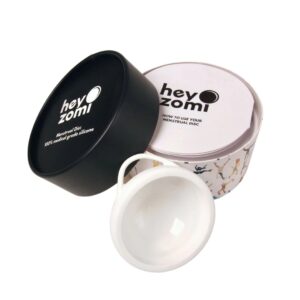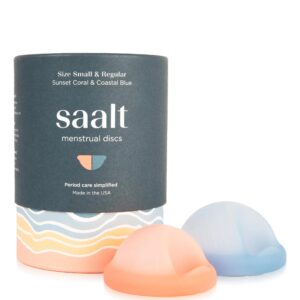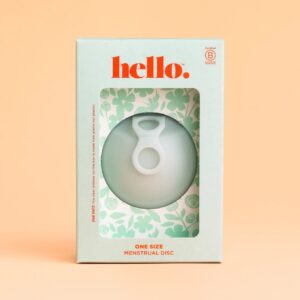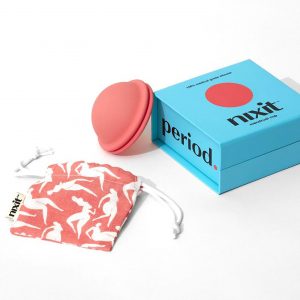What's the difference between a Menstrual Cup and Menstrual Disc?
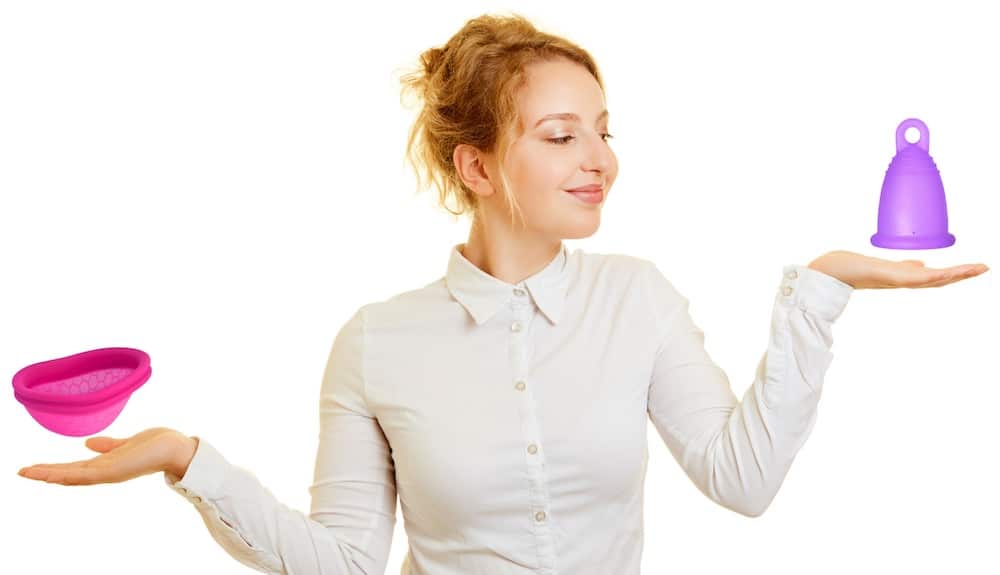
Menstrual Cups have been available for many years now, however discs have only become popular recently. Menstrual cups and discs share both similarities and differences. Both products are reusable, are worn internally, and collect (rather than absorb) your menstrual flow. Cups and discs can be worn for up to 8 hours and can usually at the same time as internal birth control such as the IUD and ring. They are both most often made from 100% medical grade silicone and come in a variety of sizes. However, this is about the extent of the similarities. Now lets take a look at the differences between menstrual cups and menstrual discs. Saalt have an extensive range of cups and discs, and we have used some of their images to help illustrate the differences between these two types of products.
The design of a menstrual disc vs cup
Unlike menstrual cups which are normally bell or V-shaped, with a narrow rim, menstrual discs are shaped more like a diaphragm, with a larger rim, and larger diameter overall. A menstrual disc has a diameter of around 60mm as opposed to cups which have a diameter typically ranging from 40-48mm.
Menstrual cups are also more structured in shape, made from thicker and firmer silicone than discs. The more ‘flexible’ design and feel of a disc may make them a more comfortable option for women who have previously always ‘felt’ a traditional style of cup.
Since menstrual discs are made of much thinner silicone, they may be easier to tear or damage if not properly cared for.

Positioning of a menstrual disc vs cup
A cup sits within the vaginal canal below the cervix, and stays in place with suction around the vaginal wall.
A menstrual disc sits lengthwise, sitting back into the vaginal fornix, behind and below the cervix. It is then tucked up and held behind the pubic bone, requiring no suction.
While ‘no suction’ may be excellent for women who have weak pelvic floor muscles or some degree of prolapse (and don’t want suction to worsen things), this lack of suction can have the potential to make a disc ‘dislodge’ after a big sneeze, cough, bearing down, or forceful movement. For people who do not have a very pronounced pubic bone, it may be difficult to get the disc to stay in place properly.
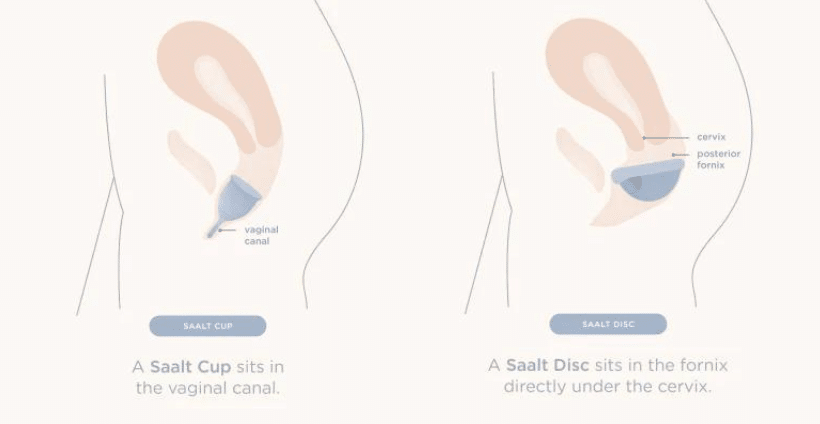
Inserting a menstrual disc vs cup
Because of the differences in how a menstrual disc is worn compared to a cup, the insertion methods are also different. A menstrual cup is inserted by folding it with one of the various folding techniques available, inserting it into the vaginal canal, and letting it pop open and create a seal. Menstrual discs on the other hand are inserted by simply squeezing the sides together between your thumb and forefinger, sliding it lengthways into the vaginal canal and tucking the rim up behind the pubic bone.
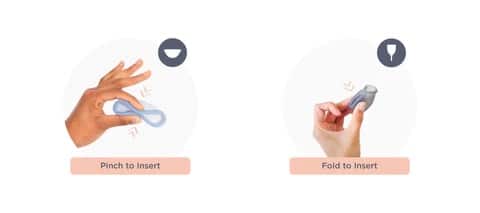
Removing a menstrual disc vs cup
To remove a menstrual cup, you use two fingers to pinch the base so that you can break the seal, pull it out, and then empty the contents in the toilet. To remove the disc, you need to insert a finger to hook the rim that was tucked behind the pubic bone, and then carefully draw it out. To help make removal a bit easier, many discs are now designed with a stem or notch.
Removing a menstrual disc is usually a little more difficult and messier, compared with a cup. To help reduce spillage, you need to try and keep the disc parallel as you remove it.
If you are out and about and unable to find a suitable place to empty your disc, you can use the ‘auto-dump’ technique. This allows for the partial emptying of the disc, without requiring complete removal and reinsertion. This technique cannot be used with a menstrual cup.
Menstrual disc vs cup sizing
Menstrual discs were traditionally offered as a ‘one size fits all’ product. This is still the case for some brands such as nixit and Hello who say that this isn’t a problem, since the ultra-soft silicone will conform to your particular body. However, it is becoming increasingly common for brands to also offer smaller size menstrual discs for those people who struggle with the larger ‘one size’ models. Such brands include Saalt and Intimina.
The Lumma Disc currently comes in 3 sizes, helping accomodate different cervix heights.
Due to the insertion, removal, and positioning differences of menstrual cups, these products come in a variety of sizes, capacity, and lengths.
Menstrual disc vs cup volume
A menstrual disc holds considerably more menstrual fluid than a traditional menstrual cup, with most of the larger sizes holding around 50ml – 70ml. This is the equivalent of more than 5 super tampons. Larger size menstrual cups typically hold around 30ml of menstrual fluid, although there are some high capacity cups such as the Merula XL which can also hold up to 50ml. Despite these impressive volumes, it is still recommended that your cup or disc be emptied every 8 hours. It is also worth bearing in mind that while a disc holds a lot more fluid, it could have the tendency to dislodge when completely full.

Cleaning a menstrual disc vs cup
Menstrual cups and discs can be cleaned and sterilised in the same way. Use only cold water to rinse during your cycle. While it’s not usually necessary, you can also clean the cup or disc with a mild oil and scent free soap, or a specially formulated menstrual cup cleanser. Both should be sterilised at the beginning or end of your period in a pot of boiling water on the stove, or in the microwave using a mug, baby bottle steriliser bag, or a menstrual cup microwave steriliser.
Since the silicone of a menstrual disc is considerably thinner than a menstrual cup, it is important that extra care is taken not to tear, burn, or damage the disc during use, cleaning, and storage.
Please always refer to the cleaning instructions provided with your particular brand of cup.
Sex with a menstrual disc vs cup
Conventional menstrual cups are not recommended to be in place during sex, They are hard and rigid and there is no room around them to make sex possible.
Discs however are suitable for mess-free period sex. This is one feature that customers love about menstrual discs. The paper thin silicone cannot be felt by you or your partner and ensures there are no obstructions within the vaginal canal during sexual play. Your vagina will lengthen during arousal, which will cause the disc to travel higher, possibly making it harder to remove. This will all return to normal a couple of hours following arousal. We recommend emptying your disc before engaging in sex, and then waiting a few hours afterwards before removing it again.
Please remember: Menstrual Discs are NOT a form of contraception and do not offer any protection against STI’s! If condoms are your only method of birth control, it is recommended to remove your menstrual disc rather than use them together. It is possible that friction between the disc and the condom could create a micro-tear in the condom.
Explore some of our favourite menstrual discs
-
Hey Zomi Menstrual Disc
$ 55.00Original price was: $ 55.00.$ 50.00Current price is: $ 50.00.Rated 4.33 out of 5 -
Nixit Menstrual Cup
$ 74.95Original price was: $ 74.95.$ 69.95Current price is: $ 69.95.Rated 4.50 out of 5
Whether you choose a menstrual cup or a menstrual disc is entirely up to your personal preference. We have lots of different cup and disc options available on our website, so have a browse through to see what suits you best.

